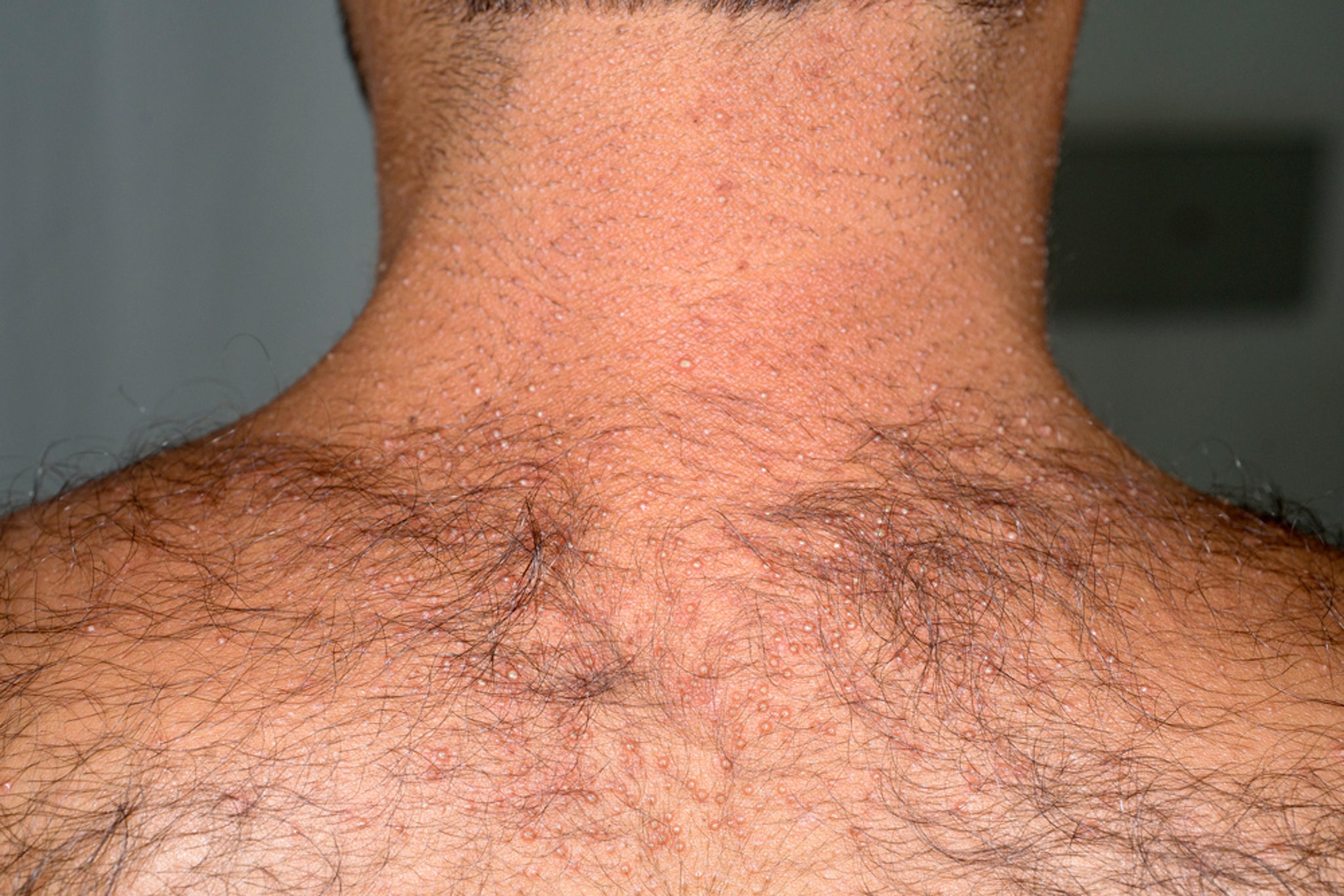In miliaria, sweat flow is obstructed and trapped within the skin, causing skin lesions. Diagnosis is clinical. Treatment includes measures to keep affected areas cool and dry and use of topical corticosteroids for the rash.
Topic Resources
(See also Introduction to Sweating Disorders.)
DR HAROUT TANIELIAN/SCIENCE PHOTO LIBRARY
Photo courtesy of David M. Pariser, MD.
Miliaria most often occurs in warm humid weather but may occur in cool weather in a patient who is overdressed, hospitalized, or bedridden.
Lesions vary depending on the depth of tissue at which the sweat duct is obstructed:
Miliaria crystallina is ductal obstruction in the uppermost epidermis, with retention of sweat subcorneally. It causes clear, droplike vesicles that rupture with light pressure.
Miliaria rubra (prickly heat) is ductal obstruction in the mid-epidermis with retention of sweat in the epidermis and dermis. It causes irritated, pruritic papules (prickling).
Miliaria pustulosa is similar to miliaria rubra but manifests as pustules rather than papules.
Miliaria profunda is ductal obstruction at the entrance of the duct into the dermal papillae at the dermo-epidermal junction, with retention of sweat in the dermis. It causes papules that are larger and more deeply seated than those of miliaria rubra. Papules are frequently painful.
Diagnosis of Miliaria
Clinical evaluation
Diagnosis of miliaria is by clinical appearance in the context of a hot environment or skin occlusion (eg, patients who are hospitalized or bedridden and who lie with their back against the hospital bed for prolonged periods).
Treatment of Miliaria
Measures to cool and dry the skin
For the rash, topical corticosteroids
First-line treatment of miliaria is cooling and drying of the involved areas and avoidance of conditions that may induce sweating; an air-conditioned environment is ideal.
Occlusive clothing and thick ointments should be avoided.
Once the rash develops, corticosteroid creams or lotions can be used, sometimes with a bit of menthol added. Once the rash develops, corticosteroid creams or lotions can be used, sometimes with a bit of menthol added.



